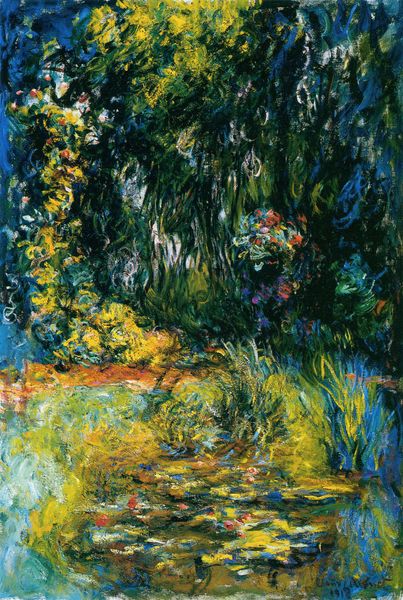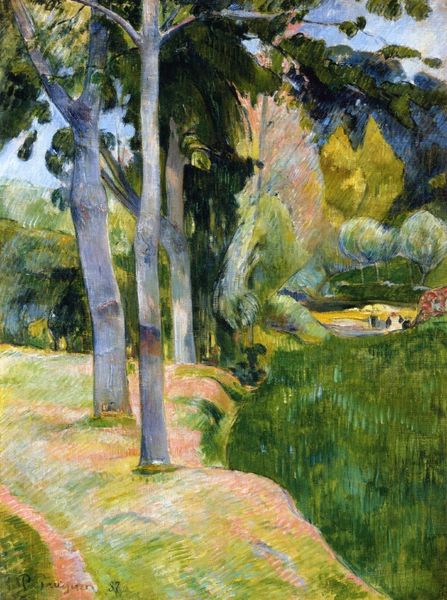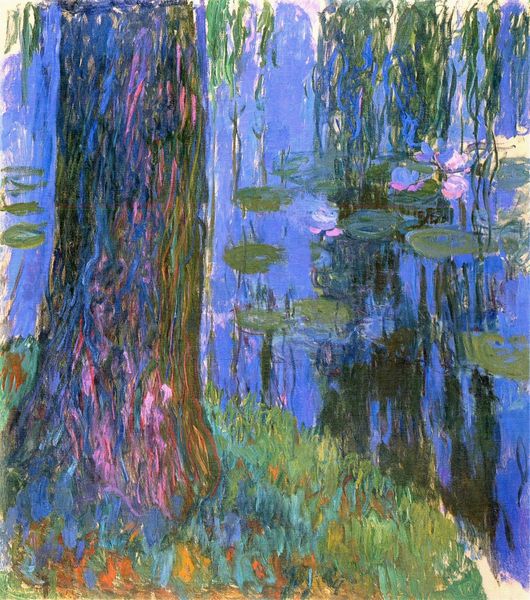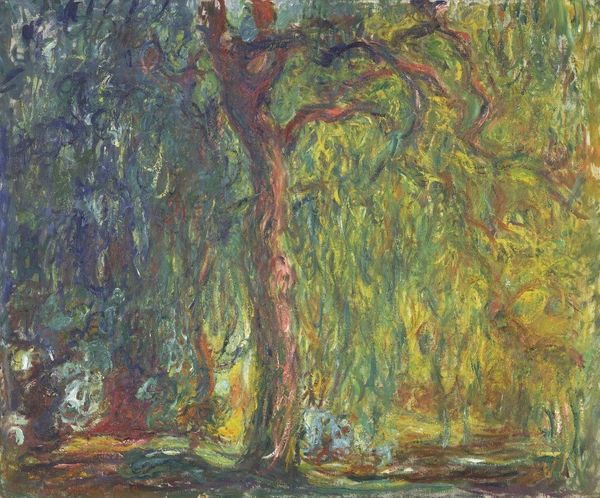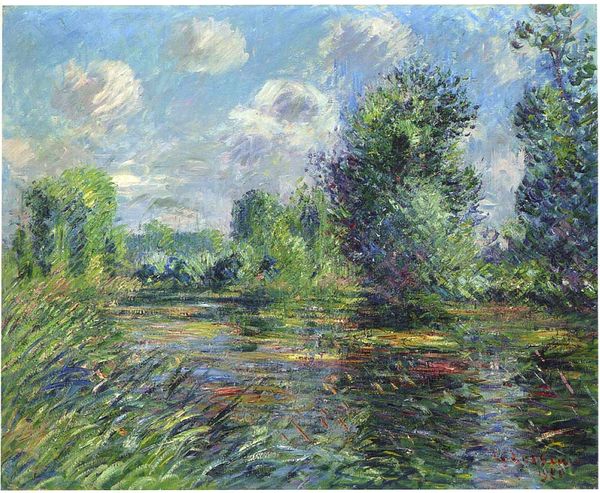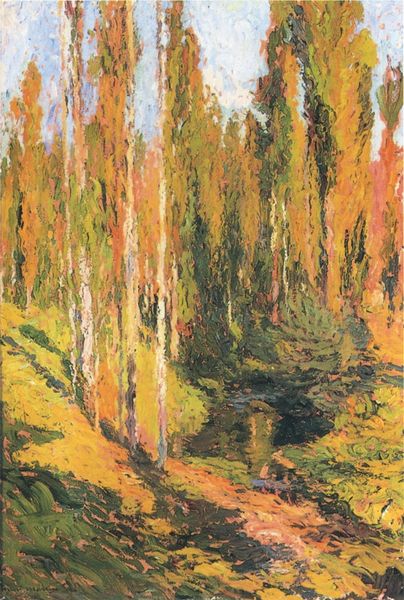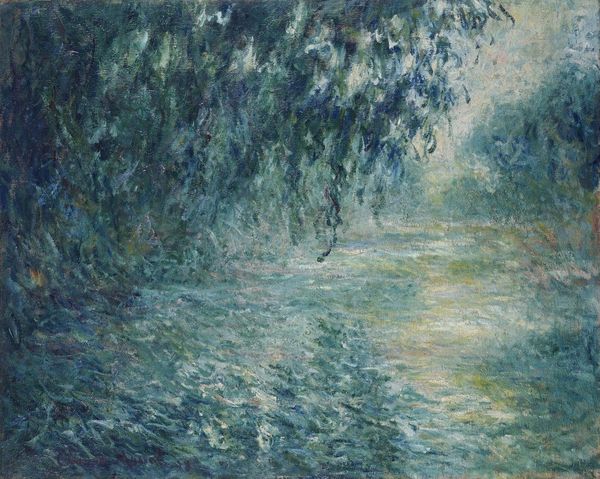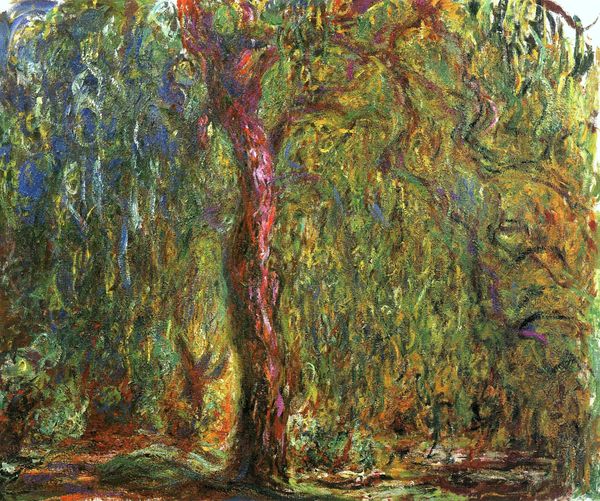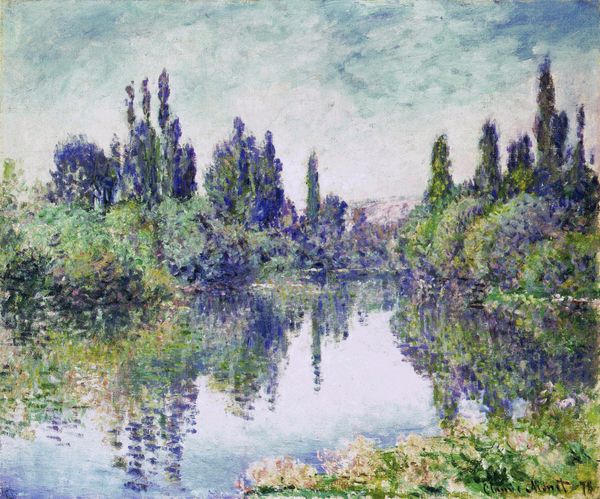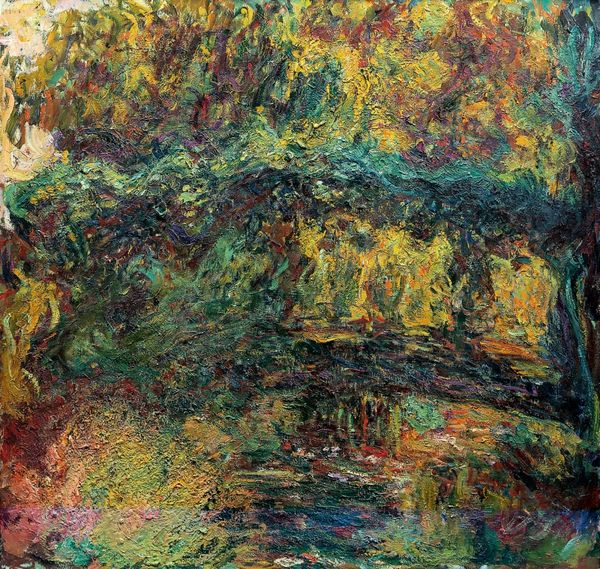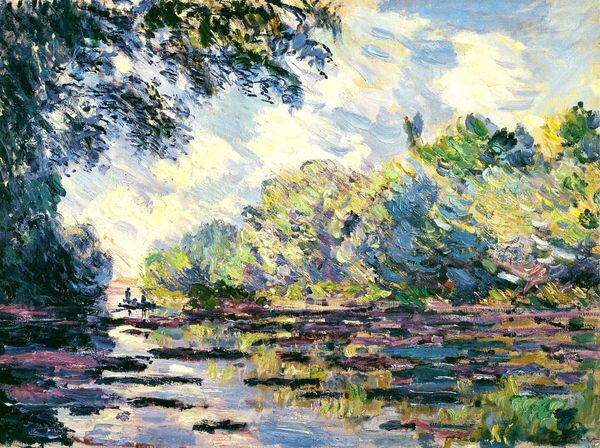
Copyright: Public domain
Editor: This is Monet’s "Water Lily Pond at Giverny," painted in 1919. It’s an oil painting, and it feels almost like looking through a dream. The colors are so vibrant and yet the forms are soft, hazy. How do you interpret this work? Curator: The softness, that "haze," can be seen as more than just a stylistic choice. Consider the sociopolitical context: this was painted right after World War I. Monet's choice to depict a tranquil garden scene, almost divorced from the harsh realities of the world, speaks volumes. The blurring of lines and forms can symbolize a desire for peace, a retreat from the anxieties and trauma of the war. Don't you think it represents the way people were trying to redefine beauty and find solace in nature amidst such devastation? Editor: That's a perspective I hadn't considered. I was focused on the beauty and light, but the historical context definitely shifts the meaning. Is there something revolutionary about this…retreat? Curator: Absolutely! Remember that Impressionism itself was revolutionary in its rejection of academic tradition. But here, after the war, Monet's persistent focus on nature becomes a quiet act of defiance. It's a reclaiming of beauty, an assertion of life and growth in the face of widespread destruction. The lily pond becomes a sanctuary, and through the painting, an invitation. How do we reconcile experiencing pleasure and beauty with awareness of societal and political strife? Editor: It's a reminder that even in dark times, art can offer hope and healing. Looking at it that way makes the painting even more powerful. Thank you, that gives me so much more to think about. Curator: And you've helped me see it with fresh eyes too, reminding me of the direct impact art can have, beyond historical context. It's a potent reminder that art's meaning evolves through dialogue.
Comments
No comments
Be the first to comment and join the conversation on the ultimate creative platform.
